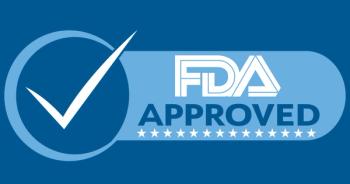
Fabienne Decrue, PhD, highlights offspring infection risk from antenatal corticosteroid use
A new study finds that while antenatal corticosteroids remain safe for very preterm infants, their use in later gestations may increase long-term infection risk.
A recent study found that antenatal corticosteroid (ACS) exposure is associated with a higher risk of respiratory and nonrespiratory infections in children up to age 21 years, except among those born extremely or very preterm (<34 weeks), for whom no increased infection risk was observed.
These findings support the safety of ACS in preterm infants but raise concerns for term and late-preterm births, where ACS use has expanded. The biological mechanisms behind this increased susceptibility may involve alterations in the hypothalamic-pituitary-adrenal axis, microbiome changes, or immunosuppressive effects. Researchers recommend more judicious use of ACS, reserving it for pregnancies with a high likelihood of preterm delivery.
Current guidelines clearly support use before 34 weeks, but many exposed infants are now born at term, reducing potential benefits. Improved prediction tools for preterm birth and stricter eligibility criteria could help optimize ACS administration and minimize unnecessary exposure.
Contemporary OB/GYN:
How does antenatal corticosteroid exposure influence respiratory and nonrespiratory infection risks throughout childhood?
Fabienne Decrue:
In our current study we were able to show that antenatal corticosteroid exposure was associated with an increased risk for both, respiratory and non-respiratory infections during childhood up to young adulthood (age 21years). We examined the association of antenatal corticosteroid exposure and infections in groups divided by gestational age at birth. Of interest is that extremely and very preterm born children (<34weeks gestational age) had no increased risk for infectious diseases throughout our follow-up period after antenatal corticosteroid exposure. These findings are reassuring of the safety of antenatal corticosteroid treatment, as there are recommendations for the administration of antenatal corticosteroids in this subgroup. However, we were the first to show the association of antenatal corticosteroid treatment with increased risk of infectious diseases in the mid- and long-term follow-up within all other subgroups (>34 weeks’ gestation age at birth). The underlying biological mechanisms are not yet clear but up for discussion are alteration of the hypothalamic-pituitary-adrenal (HPA) axis, the microbiome and immunosuppressive effects.
Contemporary OB/GYN:
How can these findings be used to guide clinical practice?
Decrue:
Our results suggest that antenatal corticosteroid treatment should be used judiciously, given the potential long-term effects in otherwise healthy term and preterm born children. Mechanistic studies are warranted to identify how ACS affect susceptibility to infections and to allow development of interventions.
Contemporary OB/GYN:
What are some limitations of current guidelines about antenatal corticosteroid use?
Decrue:
Clear recommendation on antenatal corticosteroid treatment before 34weeks’ gestational age are present. However, women at imminent preterm birth might not deliver their babies until term. Additionally, studies showing better respiratory outcomes after antenatal corticosteroid treatment prior to birth at later gestations have also been reported. For example prior to late preterm birth at 34+0 to 36+6 GA,2,3 and prior to planned caesarean birth at early term gestation (37+0 – 38+6 GA). Consequently, the proportion of children and mothers exposed to ACS has increased substantially. Importantly, approximately 50% of all children exposed to ACS are born at term (≥37 GA)6 and only a small proportion of children are exposed to ACS are born within the optimal therapeutic time window (i.e., within seven days of ACS administration and birth).
Contemporary OB/GYN:
What steps can be taken to reduce antenatal corticosteroid exposure?
Decrue
More stringent criteria for antenatal corticosteroid treatment, weighing risk versus benefits on the short and mid/long-term, and better prediction tools for preterm birth are required. This would facilitate more targeted administration of antenatal corticosteroids to women most likely to deliver (very) preterm and whose offspring are most likely to benefit.
No relevant disclosures.
Reference
Decrue F, Frier EM, Lin C, et al. Antenatal corticosteroids and infectious diseases throughout childhood. JAMA Netw Open. 2025;8(10):e2536809. doi:10.1001/jamanetworkopen.2025.36809
Newsletter
Get the latest clinical updates, case studies, and expert commentary in obstetric and gynecologic care. Sign up now to stay informed.










